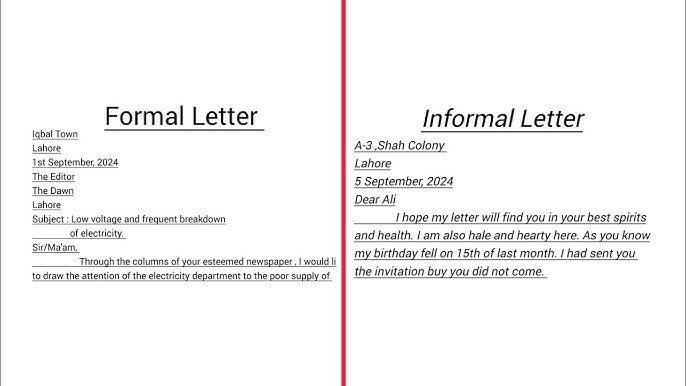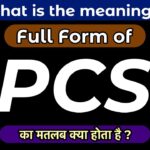Formal Letter Format: Essential Guide for Professional Writing
A formal letter is a structured way of communication used for professional, business, and official purposes. Writing a well-structured formal letter ensures clarity and professionalism.
Key Elements of a Formal Letter
1. Heading
The heading includes the sender’s address and the date. It should be aligned to the left or right margin.
Example:
John Doe
123 Business Street
New York, NY 10001
April 10, 2025
2. Recipient’s Address
Include the recipient’s full name, designation, company name, and address.
Example:
Mr. Smith
Manager, ABC Corporation
456 Corporate Road
Chicago, IL 60601
3. Salutation
Begin with a polite greeting such as
- Dear Mr./Ms. [Last Name], (If you know the recipient’s name)
- To Whom It May Concern, (If the recipient is unknown)
4. Body of the Letter
The body should be concise and clearly state the purpose of the letter.
Structure:
- Introduction: State the reason for writing.
- Main Content: Provide details and relevant information.
- Conclusion: Summarize and include a call to action if necessary.
Example: “I am writing to apply for the position of marketing manager at your company. With five years of experience in digital marketing, I am confident in my ability to contribute effectively to your team.”
5. Closing
Use a polite closing phrase followed by your signature.
Examples:
- Sincerely,
- Best regards,
- Yours faithfully,
Example Signature: John Doe
[Email Address]
[Phone Number]
Additional Tips for Writing a Formal Letter
- Keep it clear and concise.
- Use a professional tone.
- Proofread for spelling and grammar errors.
- Avoid contractions (e.g., use “do not” instead of “don’t”).
- Maintain a single-page length.
Common Mistakes to Avoid
- Using an informal tone.
- Omitting essential details (date, recipient’s address, etc.).
- Making grammatical or spelling mistakes.
- Writing long and unclear sentences.
Sample Formal Letter Template
[Your Name]
[Your Address]
[City, State, Zip Code]
[Date]
[Recipient’s Name]
[Recipient’s Position]
[Company Name]
[Company Address]
[City, State, Zip Code]
Subject: [Letter Subject]
Dear [Recipient’s Name],
[Introduction paragraph: State the purpose of your letter.]
[Body paragraphs: Provide relevant information and details.]
[Conclusion paragraph: Summarize and include a call to action if needed.]
Sincerely,
[Your Name]
[Your Contact Information]
Business Letter Format vs. Formal Letter Format
A business letter format follows the same structure as a formal letter but is often more rigid in tone and style. Business letters are used for corporate communication, job applications, and professional dealings. A formal letter structure can be used in educational, legal, and personal official matters.
Professional Letter Writing Tips
- Use a simple, readable font such as Arial or Times New Roman.
- Align all text to the left for better readability.
- Maintain proper spacing between sections.
- Avoid unnecessary jargon and keep the message clear.
Official Letter Format Example
When writing an official letter format, ensure
- The purpose is clearly stated.
- The tone remains formal and professional.
- All necessary details, such as the date and recipient’s information, are included.
Formal Letter Template for Various Situations
- Job Application Letter
- Resignation Letter
- Complaint Letter
- Invitation Letter
- Recommendation Letter
Reference
Mother’s Day Speech
Hi everyone, Today we gather to celebrate an extraordinary occasion—Mother’s Day. This day honors the incredible women who shape our lives with love and support. A mother’s love nurtures, guides, and empowers us to pursue our dreams. Let’s express gratitude for our mothers’ endless patience and encouragement. Today, let us celebrate our mothers and all mother figures who inspire us daily. Happy Mother’s Day to all the wonderful moms out there!





